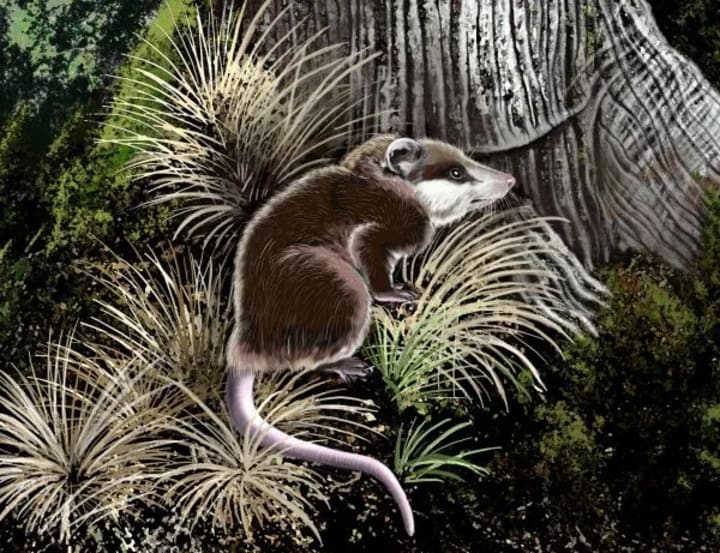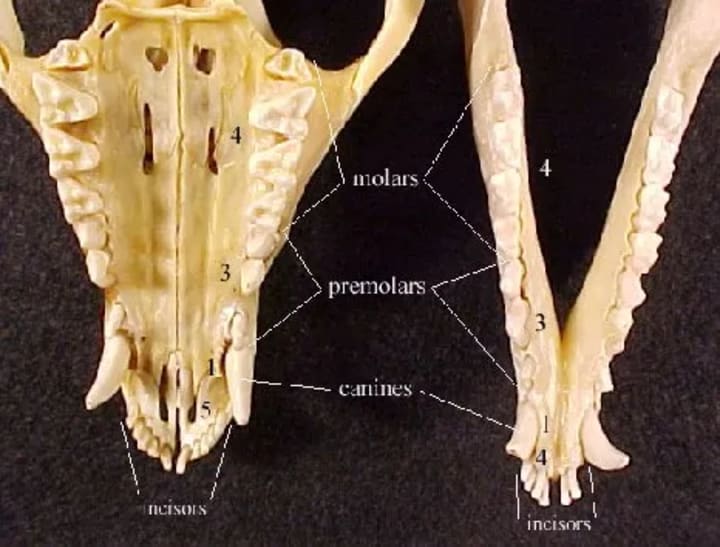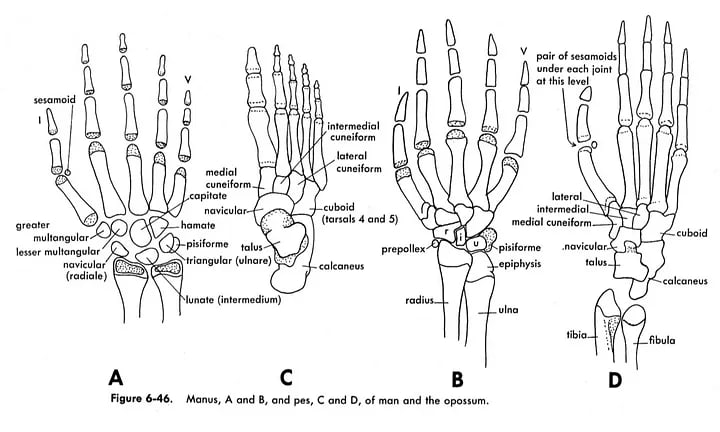10 Wild Facts You Probably Didn’t Know About Virginia Opossums
Learn A Little About the Internet Sensation: Texas Tech’s Newest Grumpy Mascot
In early November 2023, the internet was taken by storm by an incredible video of an opossum being dragged away off the field at the start of the second quarter of a college football game. The video quickly became memed by social media, celebrating the absolutely silly moment that had just aired on live television. It was truly a delight, the little fella baring its teeth as it dug its paws into the grass and was reluctantly pulled off the field.
But, the lovely little meme marsupial is more than just a grumpy wildlife icon, they’re a fascinating species, too! Discover ten more reasons why the opossum deserves our adoration, besides their propensity for making relatable angry faces.
Opossums Likely Stay Near Humans Because We Scare Away Their Natural Competitors
In developed areas, we’ve unintentionally created an environment that’s perfect for opossums. On top of throwing food out in abundance that attracts the marsupial, we’ve also scared away (or removed) many of the predators that would normally snack on opossums. City and suburb-dwelling opossums are in human-made paradise, and reap the rewards of safety and food availability like many of us do.
Opossums are in such abundance because of us and the way we have shaped our environment. Compared to so many other animals on our planet, the opossum is one the best adapted to function alongside us, granting the fella a much better deal than many of the other animals in the U.S.
Opossums (Might) Prevent the Spread of Human Diseases
In 2014, the NewsTimes published an article highlighting the wonders of opossums — especially their ability to eat ticks, thus preventing Lyme disease and making the U.S. a safer place. This content was picked up by other news stations and, briefly, every network and paper was talking about how opossums were the solution to Lyme disease. Unfortunately, this information snowballed into a very exaggerated version of the truth.
Yes, opossums can eat ticks, but they don’t actively seek them out. Instead, they truly only eat the ticks that attach themselves to their furry bodies — and they seem to be a favorite snack of many species of ticks. By grooming, some opossums do indeed eat hundreds or thousands of the critters, but not all of those ticks are the species that even carry Lyme disease. Only the black-legged deer tick and western black-legged tick are carriers of Lyme disease, and even among those species, not all of them are carriers. Most tick bites are (relatively) harmless, and most species are (relatively) harmless, too!
So then, does the opossum really prevent disease by eating ticks? Maybe. But putting them on a pedestal that celebrates their contribution to the eradication of Lyme disease is a little excessive.
Opossums Are Surprisingly Intelligent
Once again, I am surprised by the incredible intellectual capacity of a species as I investigate them. Like the chickadee, opossums have been shown to have an incredible memory capacity and can recall many different food cache locations better than most other foraging pests.
Additionally, opossums are remarkable problem solvers. Despite having a very small brain-to-body ratio compared with other mammals, they outperform dogs on both learning and discrimination tests. They can also perform in mazes better than rats and cats can, finishing more quickly on average than both.
Opossums are Well-Fortified Against Diseases and Venoms
Unlike many other mammals, the opossum has a low body temperature, ranging from 94–97°F, which makes it incredibly rare for rabies to successfully survive and grow in their bodies. It’s of note that they can still catch the disease, but they’re less likely to catch it than most other mammals. They’re also less likely to spread the disease so, though I do not recommend putting yourself in this situation willfully, getting bit by an opossum doesn’t pose much of a rabies risk.
In addition to temperature homeostasis that prevents rabies, the opossum produces remarkable proteins in its blood that help it stay resistant to the venoms of many North American poisonous snakes. Because of this resistance, the critters are adept at eating local varieties of snakes — and some scientists believe that studying the opossum further has the potential to improve treatment for us humans afflicted by snake bites.
Opossums Are Ancient

Roughly 65 million years ago, a mammal group that looked strikingly similar to the modern-day opossum survived the extinction of dinosaurs. In fact, according to researchers, this marsupial clade has been identified to be a sister group of all the living opossums we know and love. Opossums may have been some of the earliest sorts of mammals to evolve, predating the emergence of placental mammals (those who raise their newborns inside their bodies). This information suggests that marsupials may be a better approximation of what proto-mammals may have been like before we showed up on the scene.
Their Hairless Tails are Susceptible to Frostbite and Hypothermia
Truly, the most striking visual of the opossum (other than its grumpy demeanor) is its odd hairless appendages. Its ears, paws, and tail lack the thick fur that covers the rest of its body, making for a goofy appearance. They’ve likely adapted this feature on their paws and tails to improve their climbing ability, as they use their tails as a 5th appendage to grip branches and hold objects as they climb about on trees and bushes. Likewise, the hairless ears likely aid the opossum, improving their hearing, limiting the amount of maintenance necessary, making it easier for the critters to dissipate heat and maintain their low body temperatures, or a combination of these three advantages.
Unfortunately for the opossum, this makes them rather susceptible to frostbite. In winter months, opossums counteract this vulnerability by hiding in hollow logs, trees, and other locations which will keep them out of biting winds.
On the West Coast, They’re a Rare Example of a Beneficial Non-native Species
It’s not often that an introduced species poses a benefit to a habitat, but the opossum is a lovely exception to the rule. Introduced to the west coast of the United States in the late 1800s, this lovely species has helped with habitat homeostasis, partly due to its omnivorous tendencies. The opossum has a taste for several more harmful invasive species on the West Coast and also has a knack for more successfully eating food waste that might harm other species of animals. Because of all this, they make for excellent natural pest control, limiting the number of rats, ticks, cockroaches, and snails, and even cleaning up decaying organic material like overripe fruit and carrion. On the West Coast, some even call Virginia opossums heroes of the woodlands near the coasts!
Opossums Have Over 50 Teeth!
Often lovingly called nature’s trash can, the Virginia opossum is well-equipped to eat pretty much anything that it can get its mouth on. It has an impressive set of chompers that it uses to make meals of carrion, small creatures, fruits, eggs, grain, bones, and, of course, any human or pet leftovers it can get its little hands on.
They’re built to be scavengers and, as such, need different types of teeth to process all the different textures they desire. Like humans, they have an incisor section at the front, surrounded by canines, followed by premolars and molars at the back.

The impressive number of teeth in their mouth awards them the title of most toothy mammal — an impressive feat for such a little guy. They seem to be proud of them too, often baring and chomping them to scare any creatures away that make it feel threatened.
Opossums Have Four Opposable Thumbs
In the animal kingdom, it’s rare for creatures to have opposable thumbs. But our lovely little opossum has growths on both their hands and feet, making it appear like they are climbing using four weird human hands. Called a hallux, this opposable thumb-like growth on Opossum feet makes climbing easy for them. They can use their hallux to wrap their hands and feet around branches, granting them more friction and purchase as they navigate their environment.

Though they are technically ground-dwelling creatures, opossums often use their expertise in climbing to quickly escape danger, often preferring this approach to ‘playing ‘possum’ whenever possible. In addition, this adaptation serves them well for navigating terrains with fences and poles, like suburban neighborhoods, for example.
There Are Roughly 100 Species of Opossums
Opossums are all over the western hemisphere, with many different species in North, Central, and South America. Though the Virginia opossum is likely the one you’ve heard of the most, especially if you’re reading this from the United States or Canada, or just love American College Football, the critters live about this entire side of the world.
The Virginia opossum is the only United States and Canadian Native, but there is a huge variety of opossums in Mexico and Central America — and an even wider variety throughout South America!
-
It’s apparent that the Virginia opossum is a fascinating specimen, and has more qualities to love than an endearingly grumpy face. From the remarkable adaptations they possess to the benefits they offer us, they deserve a special place in our hearts and our neighborhoods. So, as you celebrate their quirks, don’t forget to also appreciate all that makes them a beneficial species to us and our wild planet. And perhaps next time you’re lucky enough to see one, remember these facts and let the little critter carry on its merry way.
-
Cross-posted from Medium
About the Creator
Olivia L. Dobbs
Science Enthusiast, Naturalist, Dreamer, Nerd.
I crosspost my Medium articles here :)
You can find my main account on Medium: https://medium.com/@oliviadobbs13
Check out my science! -> bit.ly/DobbsEtAl






Comments
There are no comments for this story
Be the first to respond and start the conversation.